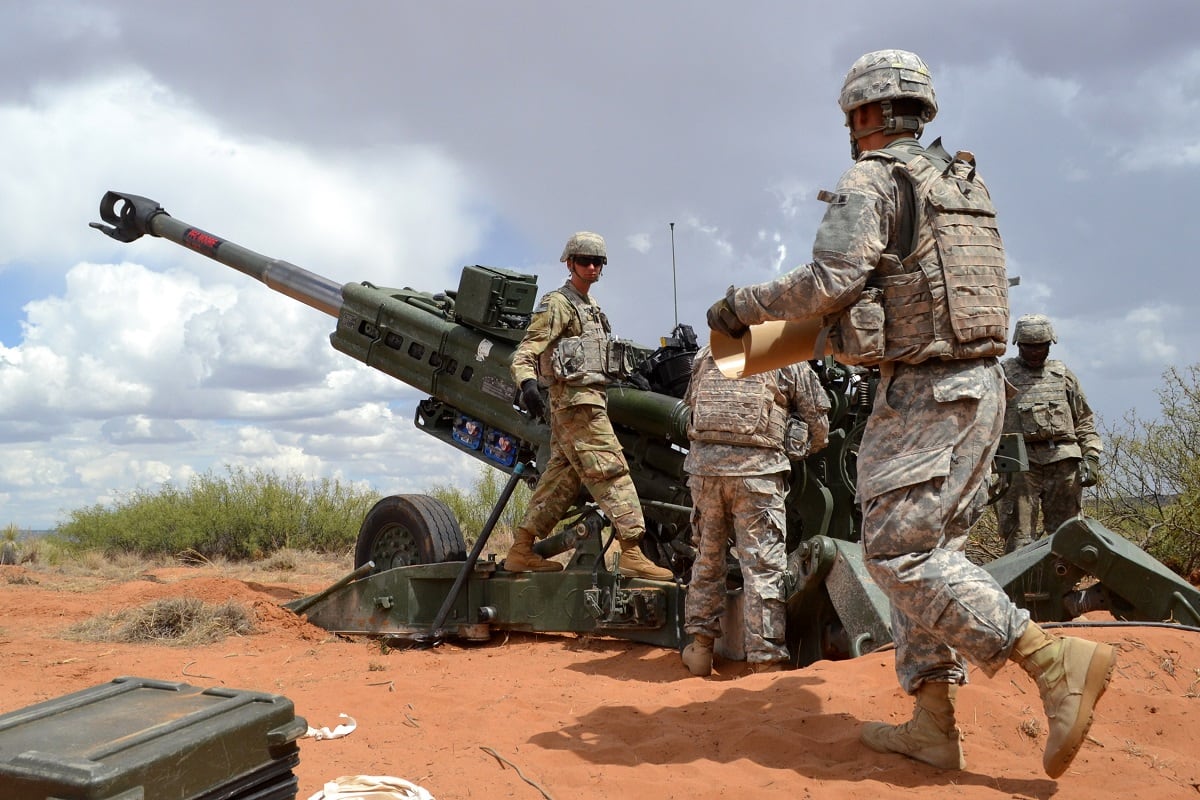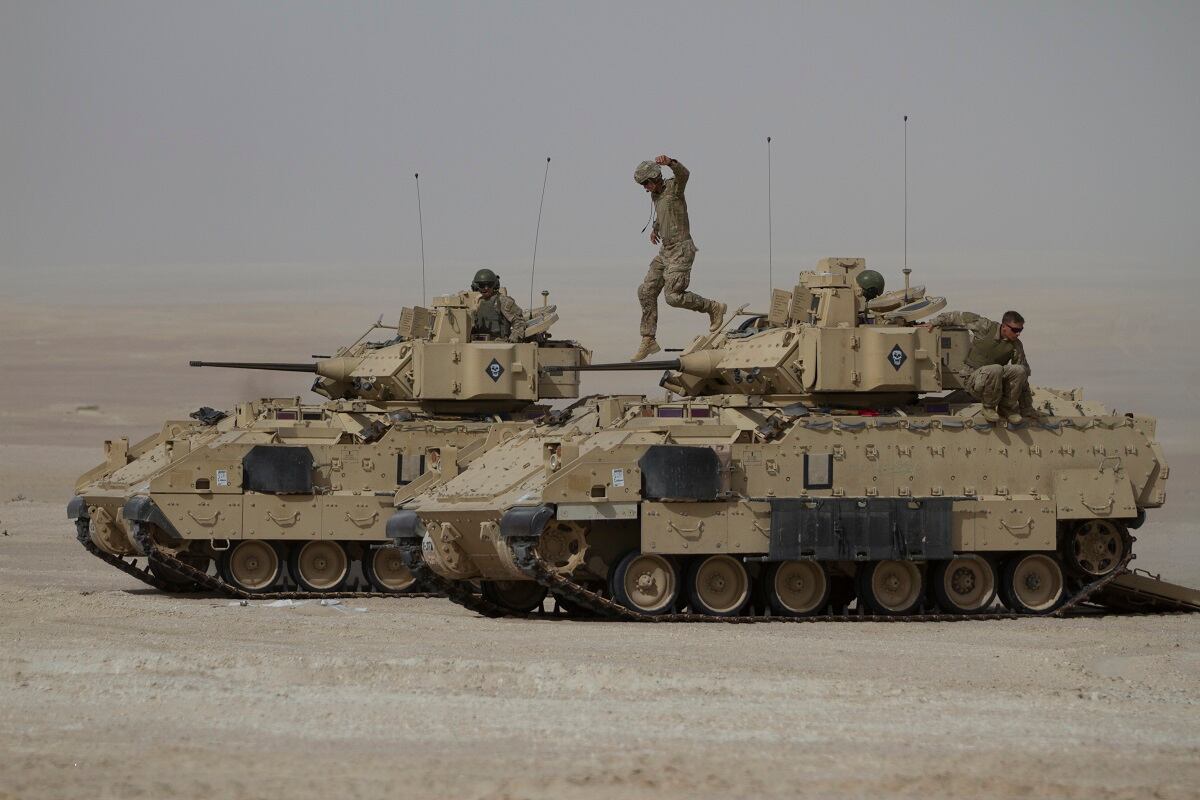“You can make mistakes, but lose equipment and you will be fired.” I learned this early in my career, and it has continued to be reinforced on an almost daily basis with tie downs, weekly and monthly inspections, and automatic investigations for just about any piece of equipment misplaced.
Keeping track of equipment is vital to being a professional soldier, but there are negative side effects from a culture of accountability. With the U.S. Army facing a potential surge of money to modernize, we need to recognize this culture, or it will detract from our efforts to prepare for the future.
The new secretary of the Army, Mark Esper, has identified modernization as one of his priorities. There are plans for a new Futures Command and cross-functional teams meant to aggressively streamline requirements, research and development, and procurement and acquisition processes. Teams will address everything from a new combat vehicle to soldier lethality — which can span new weapons, night vision and unmanned aerial vehicles at the individual soldier level.
The Army’s modernization efforts coincide with the development of a new fighting concept — multidomain battle — that foresees soldiers using new technologies, from artificial intelligence to robotics, while fighting across all domains — air, land, sea, space and cyberspace.
One thing that capability developers and even Army senior leaders often forget in their effort to give soldiers new technologies is the culture of accountability.
Soldiers are indoctrinated from Day One on the importance of maintaining accountability of all their equipment. And when I say “all,” I mean all. Soldiers get issued ID cards, clothes, equipment, weapons, ammunition and much more. They are accountable for it all. If a soldier loses something early in his training, a common corrective action is to have the soldier tie every piece of equipment on his body to himself with parachute cord (commonly called “550 cord” or in these instances “dummy cord”). From head to toe, everything is tied down — hat, shirt, pants, boots and even the ID card.
RELATED

Officers learn the rules and regulation of their responsibilities to maintain their entire unit’s gear. All company commanders in the Army sign, inspect and resign property books that list the millions of dollars of government equipment (from vehicles to gun magazines) for which they must maintain accountability.

There are many types of property that are listed on a commander’s property book. There are sensitive, high-value, durable and nonexpendable items — and even ammunition if in combat. Lose any one of these and a formal investigation is initiated to determine financial responsibility and possibly punishment. Depending on the type of equipment, the investigation is required just to document what happened, even if it is known.
The two primary mechanisms of maintaining accountability for equipment is routine inspections and tie downs. These practices happen in both garrison and combat. In the field, usually a morning and evening report is submitted stating that leaders at the lowest level have touched and verified each accountable piece of equipment in the unit’s possession. Every month, even in combat, an officer will be taken off duty to perform a mandatory, 100 percent sensitive-items-by-serial-number check, as well as check a randomly selected 10 percent of the overall property book inspections of equipment. In garrison, most units require a weekly count (often called a barrel count) of all sensitive items before leaving for the weekend.
To be sure, maintaining accountability of equipment is vital. At the broadest level, accountability prevents fraud, waste and abuse of government resources. More importantly, care and maintenance of equipment is part of being a professional solider. Each piece of equipment is a component of the soldier’s and unit’s fighting capability. A soldier without a rifle can’t fight.
But the negative side effects of a zero tolerance or perceived zero tolerance culture of accountability of equipment can lead to negative practices, such as:
- Soldiers buying their own equipment. I have seen soldiers buy their own kneepads, flashlights, rucksacks, knives and hand-held global positing systems. Sometimes they buy these things because civilian versions are better, but also because they don’t have to worry about losing it.
- Not issuing equipment. Many units will not issue equipment because it is rarely used or too much of a hassle to maintain accountability for it. A good example of this is the M9 bayonet made to mount on soldiers’ rifles. Most units will lock them in a footlocker in the arms room with bands so they don’t have to be individually counted each day or during monthly inspections.
- Not using equipment. When I was in command of an infantry company in Baghdad, Iraq, I would not fly my Raven lightweight UAV that can cost $35,000 or more per unit. Despite the fact that I thought it had a poor video feed, I would not fly it was because if it was lost (which was highly likely because a strong gust of wind, lost signal or operator error often crashed them), then it became an emergency mission to recover it and an incident that would initiate a major investigation if not found ― which is often perceived as something that comes before being fired.
Addressing the culture of accountability is a dilemma. How can the Army maintain the accountability of equipment while maximizing soldier’s ability to use it without adding self-imposed constraints?
The culture should at least be a thought-in-equipment design, especially for items intended for dismounted soldiers. How will the gear be secured? It doesn’t matter if the piece of equipment is bolted down, such as the laser identifier for rifles and machine guns ― soldiers will be required to tie it down.
Accountability can also be factored as the price of a device increases. Will the cost of the device make it such a sensitive item that it will not get used out of fear of losing it?
The Army could also change the regulations on what price or type of equipment can be expended or lost without triggering an investigation. Better yet, efforts can be made to develop technologies that are actually disposable like the Defense Advanced Research Projects Agency drone that disintegrates after its mission. This would reduce both logistical and accountability requirements.
RELATED

The strength and weakness of culture can vary by units. Senior leaders do have the ability to influence long-held beliefs. While investigations to hold people accountable serve as a strong deterrent to losing equipment, equally powerful are senior leaders that establish trust and understanding by assessing the circumstances of lost equipment rather than implementing automatic investigation procedures.
A colonel I worked for shared a story with me from when he was a battalion commander. His soldiers were doing a river crossing in combat. A weapon accidentally fell into the raging water. The colonel locked the area down and made the call to his brigade commander. He (and I) were surprised when the brigade commander said: “Did you do what you can to locate the piece of equipment? … Yes? … Then continue mission.”
If the Army doesn’t address the accountability culture in its efforts to rapidly modernize with advanced technologies, it may see soldiers not maximizing that new equipment. The service might as well buy a lot more parachute cord for all those tie downs.
Maj. John Spencer is the deputy director of the Modern War Institute at the U.S. Military Academy. A former Army Ranger instructor, he has held the ranks of private to sergeant first class and lieutenant to major while serving in Ranger, airborne, light, and mechanized infantry units during his 24 years as an infantryman. The views expressed in this article are those of the authors and do not reflect the official policy or position of the Department of the Army, Department of Defense or the U.S. government.








